Using innovative techniques and introspective reflection on her experiences as a transnational adoptee from China, artist Tong Zhou Annie Lafrance discusses how she explores identity and cultural heritage in her work.
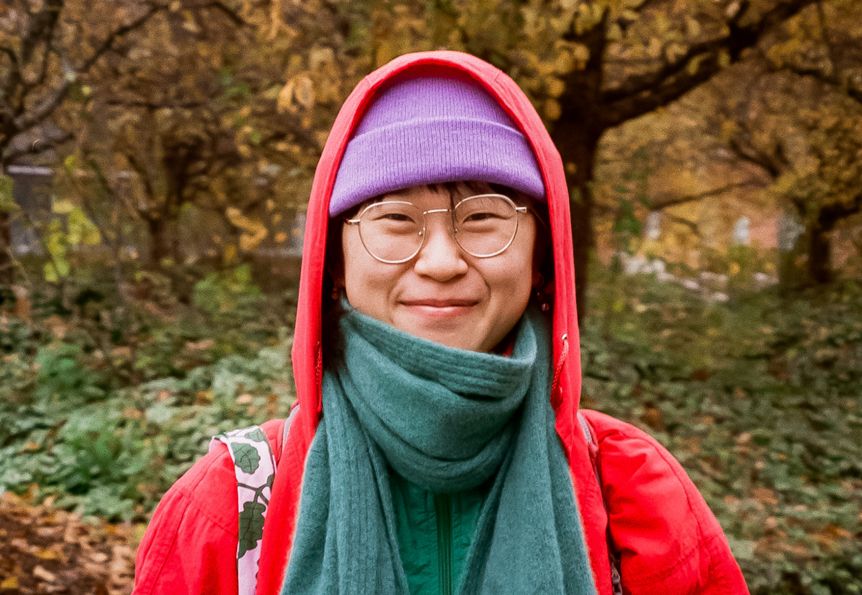
Adopted from China by a Quebecois family when they were one year old in 1999, the 23-year-old graduate student in fibre art at the China Academy of Art in Hangzhou is on a personal journey to learn more about their cultural heritage. She hopes her art can provide more insight into the experiences of transnational Chinese adoptees, which can help meet the United Nations Sustainable Development Goal for Reduced Inequalities by building more cross-cultural understanding.
Tong Zhou began in fine arts, graduating from Concordia University with distinction in 2021, but they wanted to use other multidisciplinary mediums for a more immersive artistic experience. In this interview, Tong Zhou talks about her artistic progression in tandem with her personal experience and an explanation of three artworks depicting this journey.
How did you venture into the arts?
When I started fine arts, I took more of a painting and drawing approach. But then I wanted to dig deeper into my cultural heritage, and something that triggered me was that in these mediums, my heritage is not representable.
I started learning Mandarin in 2019, and there’s a physical manifestation of how it changed my approach to art. At this point, I had a blank page of what I should do in art, and I didn’t know what to do. So that’s why I wanted to learn the language and see if reaching out in the language I was born in, and the culture I was born in, would be a path. I think culture and language are so connected.
If I want to speak about a culture, I need to learn about the language. That’s why I switched to more performance, sculpture, and photo-weaving. Those practices also allow me to take more time to learn the language, to hear the language. It’s all about balancing learning new skills and still expressing myself in an artistic way. Photo-weaving is more about reflecting on how my personal experience can transpose into images.
That’s where I’m slowly getting how the symbolism can be used visually and how I can make subtle little hints of what I learned in the language. My new technique for photo weaving is a lot about repetition, and I think learning a language is also about repetition.
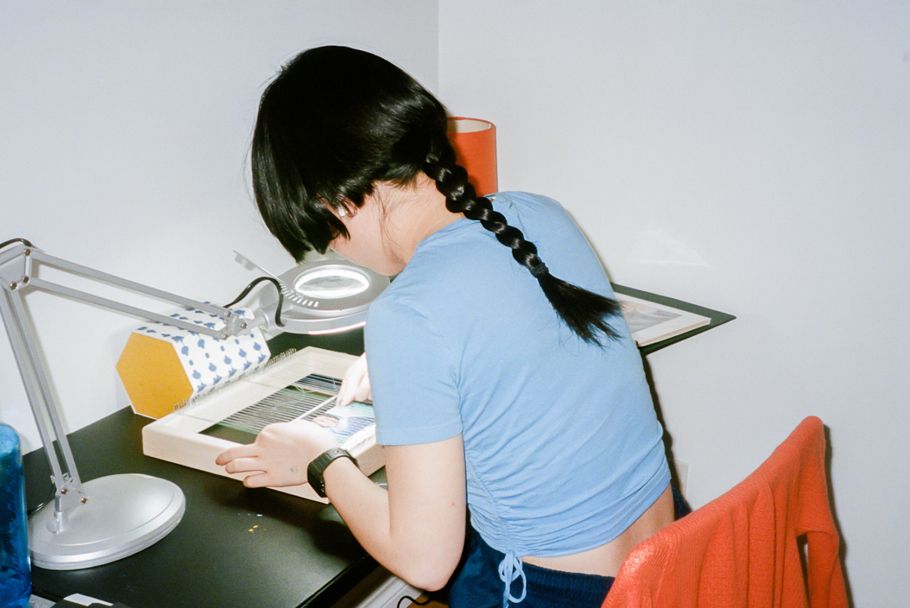
How does your art reflect your personal experiences as a transnational Chinese adoptee in Quebec?
I've always been curious why I don't look like my family. They raised me and told me I came from China, but I didn't get much information. When I started making art, we were asked to talk about ourselves. For me, that was a big clash because how I see myself doesn't reflect how others see me, and there's always this cultural gap that I need to fill on my own. And that's where I feel conflicted.
Recently, someone spoke about ambiguous loss, and it really described how I've been navigating my art and looking for an answer. I feel like I lost something, but I'm not sure why. There's a grief that I cannot grasp onto, and even though I think I'm older now and more able to speak about myself, there's always something that needs to be answered for me.
That's the reason why I applied for graduate studies in China. I wanted to explore this part of the grieving process in China, but because of the pandemic, I don't think it's something that can be done right now.
I read a lot about transnational adoptees and essays about these shifting communities and how that's creating this language, how we are in the process of defining our language. When I started making art, I had difficulty expressing this part of myself with words and concrete facts. That's where I got more into metaphors and symbols that reflect how I feel.
Let’s look at a few of your artworks. What is Birth of Home (2018) about?
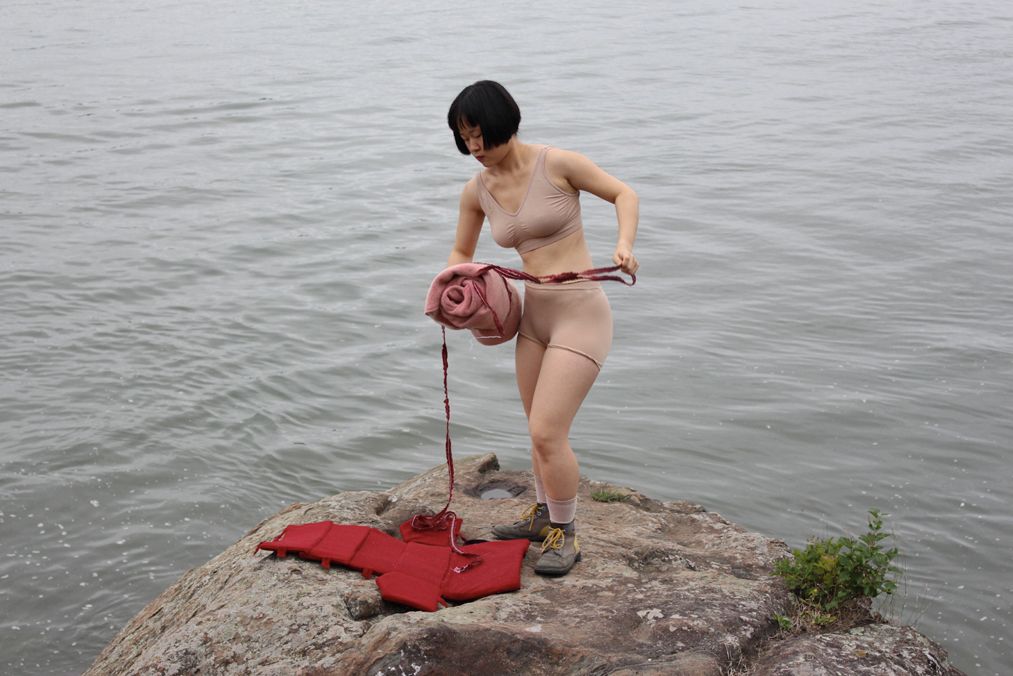
Birth of Home has always been one of my favourite projects. I want to re-explore it. I did this in 2018 when I was at the beginning of learning about myself. I grew up in Quebec City, and I think the only Chinese people I encountered in daily life were also adopted, so when I came to Montreal, I just realised that there were tons of Chinese people. I needed to explore a more bodily expression of who I am and translate it with the birth of my home and my identity.
The performance is as a backpack in the form of the house. Inside the backpack of the house, there’s a uterus sleeping bag. The performance is me entering the space with my backpack, taking it off, and then opening it to show the sleeping bag.
This is a bit of a transformation within backpacking and travelling. When I’m in the uterus sleeping bag, I’m taking a cord that is just unfolding into changing colours, so the uterus from the outside is pink and from the inside is purple. This is a slight hint to show there’s a change when I go to the uterus and when I go out.
It was a very poetic way to represent how I came into the world, but this is a process that was really important for me to explain to myself and to explain to others that there can be beauty in not knowing something. If I knew exactly where I came from, I don’t think I’d have this mentality.
In the end, I roll up the uterus to show the purple side, and I exit the space. That’s how the performance ends, and it’s a sort of non-ending performance, just like a cycle when you go to a new spot, you unfold your stuff to camp, then you pack it up and go to a new place. To each new site you visit, you are reborn in a way.
What is Family Archives (2020 - ongoing) about?
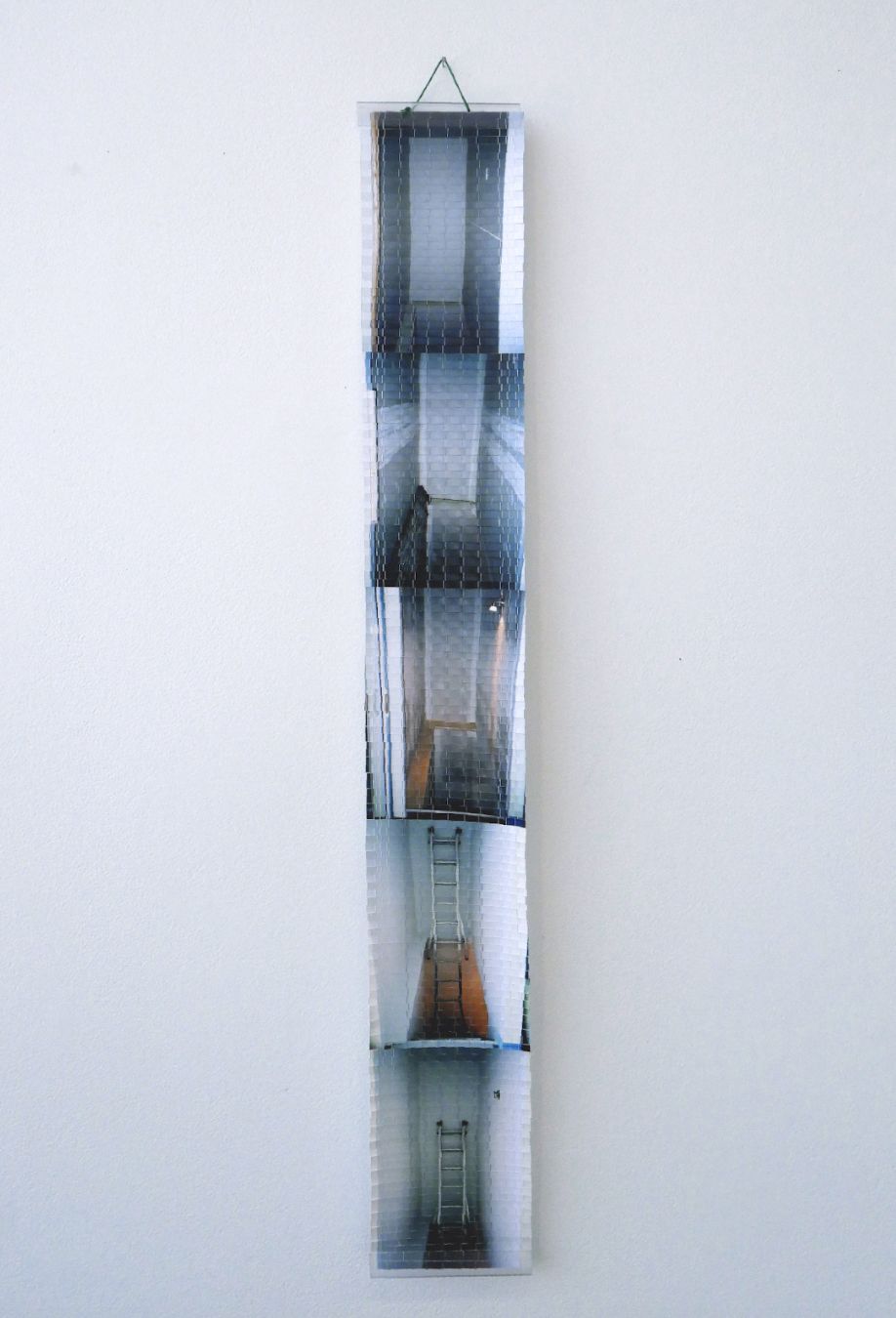
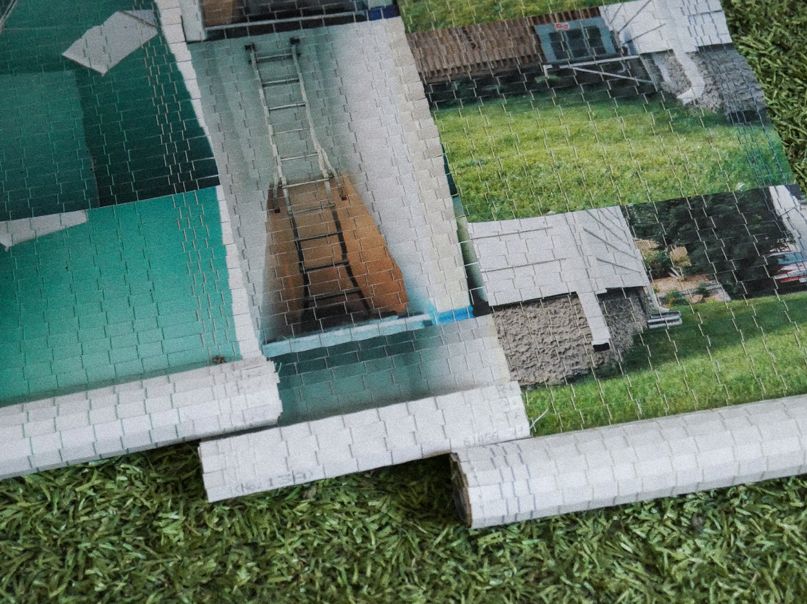
My parents were renovating the house and they had many photos, but I don’t have this much content for my adoption. How can I better understand the renovation of a house more than my own adoption? That’s why I decided to use the renovation as a way to show a transformation.
I have tons of footage of the renovation of my parent’s house. Although the footage is mundane, that’s where I found meaning to it. I love that it’s not as close to who I am but more close to how I see time. That was more my intention.
Since it was also my first series exploring photo-weaving, there was a lot of trial and error. This is a series I love to use when I want to try a new technique. I think that also goes with the subject of renovation. When you do renovation, you want to upgrade your way of making or your way of living, and that’s how I see Family Archives.
Photo-weaving is a technique I ended up with after doing a lot of exploration. I have this Chinese astrology calendar with my birth year. It’s just strips of paper woven together with a machine. That’s an object I wanted to reinvent, and that’s where I came up with photo-weaving. It was a mix between finding a new way of presenting a two-dimensional artwork and connecting with the photographic archives and the touristic objects my parents brought back from China, and how I can interpret them.
I think about how the subject of the archive and the concept of home can change through the years. Even though it's a photographic image, the process that I’m using is weaving them back together. The process of putting the archives in the present and doing a new timeline, and seeing them in a new way.
How does From China, To Canada (2021) reflect a delusional dream?
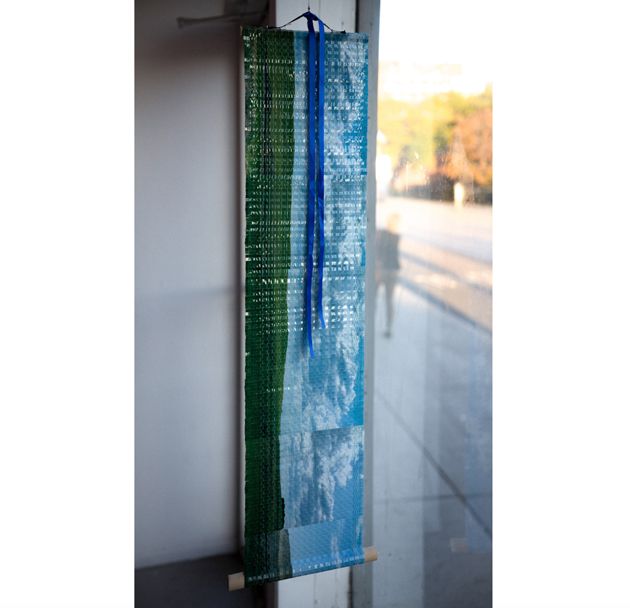
This is a mix of planning between where I can travel in Canada and not in China. I'm free to explore the entire land in Canada, but I can only represent China with only an online landscape as a reference. This is the delusional aspect of it.
For me, this piece is about putting this aspect of an ambiguous place that is both, in my mind, Canada and China. It is about how I can use my fingers and use my body's dexterity to weave back this scenery. I need to construct a vision, deconstruct it, and then reconstruct it. It ties down to this cathartic feeling that I need to go over and over again to understand more about myself and the community.
The footage is from Saskatchewan, but since it's so plain and broad, it can be from pretty much anywhere in the world. While weaving, this piece took me an entire semester to do; it was also during the quarantine time. I was just wondering: how am I going to go to China if I'm trapped here in my apartment?
This piece is a window to a place that we want to go or have access to, and this image asks, what does it mean when it is on paper? What if we can touch it?
Where do you see your artistic journey progressing?
Recently, I've been digging into real archives. I don't have a lot, but I want to show the process of my adoption, the group we were in, and the parents who were also part of the adoption process. That is something I'm taking the time to reflect on. It's slower for me to dig into that subject, but it's more important in the long term for my personal growth and showing this part of the past to the world because I think something hard for the art community is that it's not known. It's nearly taboo to show this part of our history, and it's even trickier to talk about in China. My challenge would be to approach this subject in China.
I'd like to connect with the community in Quebec, in Canada with the adoptees and create a space so that more people can voice their stories. I only know a few that are doing that right now, and I think that, because it's not possible to go to China right now, why not embrace ourselves, empower ourselves in Canada, and see what can grow.
See more of Tong Zhou Annie Lafrance’s work here.
